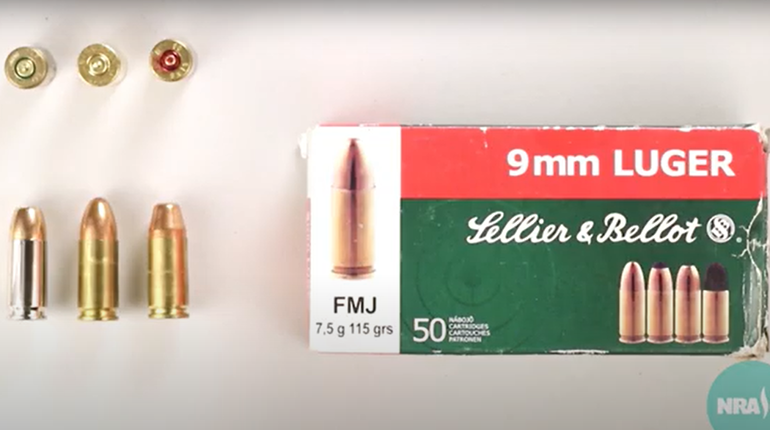
WARNING: All technical data in this publication, especially for handloading, reflect the limited experience of individuals using specific tools, products, equipment and components under specific conditions and circumstances not necessarily reported in the article and over which the National Rifle Association (NRA) has no control. The data has not otherwise been tested or verified by the NRA. The NRA, its agents, officers and employees accept no responsibility for the results obtained by persons using such data and disclaim all liability for any consequential injuries or damages.
In this handloading article we have a pair of warnings that our readers might find instructional, and in one case, even a bit amusing. We call it “Don’t be that Guy!”
The photo above comes to us courtesy of a gunsmith who wanted to share a bit of basic safety knowledge. "Now, I know what you're thinking ... Did he load six grains of Bullseye, or only five …"<in best Clint Eastwood voice>. Actually, it was nothing quite so dramatic.
The “spectacular instant disassembly” reportedly occurred with a safe, standard load … just done way too many times for the case to withstand it any longer. As the gunsmith noted, “Guys, when you have about worn the headstamp off your pistol brass, throw it in the recycling bin! That is, unless you *like* having it blow up in your hand and break your pistol ...” Most things have a definite service life, and the same is true of cartridge cases.
Our second account of “Don’t be that Guy!” is a bit more involved. Many years ago, the writer was approached by an enthusiastic, but less-experienced handloader. It seems he was using a .45 ACP carbine upper on an M1911 lower to hunt wild pigs in very dense brush. He wanted to do all he could to “magnum-ize” his .45, so he went to the .44 Magnum data section of his reloading manual to find the best powder.
Then, looking in the .45 ACP section, he saw that data for his chosen powder was conspicuous by its absence (for some strange reason.) When we met, he asked if I thought XX gr. of his .44 Magnum-type powder sounded good, after off-handedly stating his goal of reaching an impossibly high velocity.
The writer gave only a small shriek of horror before briefly and emphatically outlining several of the many factors that made this dangerous … but our intrepid loader would not be dissuaded, saying he’d have test results after the weekend.
The writer, attempting one last time to get him to grasp the importance of the warnings given, replied “Well, when—not if, but when you blow out your case head, at least be sure not to have a magazine in the mag well, so that the gas won’t be impeded when it blows out at the bottom.” He merely nodded sagely in response.
The following Monday, the lad dutifully reported his results—in a wondering tone he said, “Well, it happened just like you said—the case head blew out, and luckily I had [steel reinforced, rubber] grips on it, which protected my hand. Not having a mag in it was really good advice!”
What educational tales do readers have that they'd like to share? Email us at [email protected]. Don't worry, we fully understand when these things happen to “a friend” …
SSUSA thanks the U.S. Army Marksmanship Unit for allowing the reprint of this article.


































